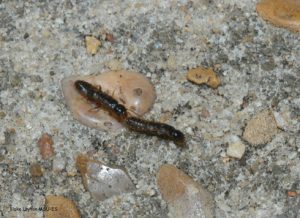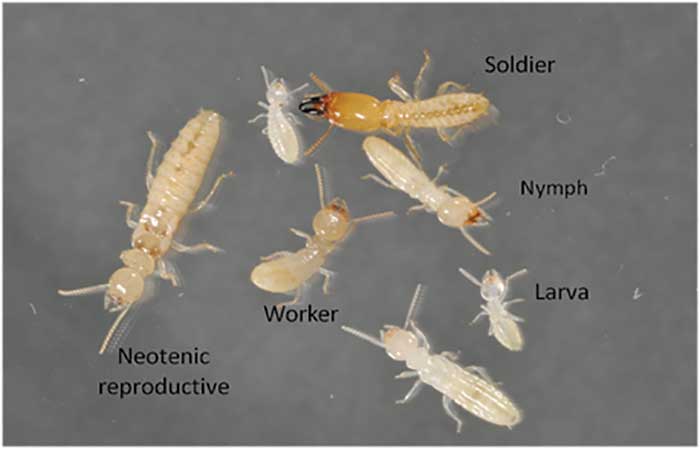The Basics of Termite Reproduction
Termite reproduction is a multi-stage process that begins with the swarming of alates and culminates in the establishment of a new colony. Each stage of reproduction is essential for the successful formation and expansion of termite colonies. Here’s an overview of the key stages in termite reproduction. Inside Termite Reproduction
Swarming and Mating
Swarming is the initial phase of termite reproduction. During specific times of the year, usually after a rain, winged reproductive termites, known as alates, emerge from their nests. This event, often referred to as a nuptial flight, is a critical part of their reproduction cycle. The alates are responsible for mating and establishing new colonies.
During the nuptial flight, alates from different colonies converge in large swarms. This increases the likelihood of successful mating between individuals from different genetic backgrounds. Once a pair of alates find each other, they mate mid-air and then land, shedding their wings. The male and female then begin their journey to find a suitable location for their new colony.
Colony Formation
After mating, the primary reproductive pair, consisting of a king and queen, begins the process of colony formation. They seek a suitable nesting site, often in the soil or within wooden structures. Once they find an appropriate location, they create a small nest and begin laying eggs.
The queen’s primary role in the new colony is to lay eggs. Initially, she produces a small number of eggs, but as the colony grows, her egg production increases significantly. The king’s role is to fertilize the eggs and support the queen in the colony’s establishment. Together, they lay the foundation for a thriving termite colony.

Understanding Termite Castes and Their Functions
Termite colonies are highly organized and consist of different castes, each with specific roles that contribute to the colony’s overall function and survival. The primary castes in a termite colony include workers, soldiers, and reproductives. Each caste plays a crucial role in the colony’s lifecycle and reproduction.
The Worker Caste
Workers are the most numerous caste in a termite colony. Their primary responsibilities include foraging for food, caring for the young, and maintaining the nest. Workers are sterile and do not participate in reproduction. Instead, they focus on ensuring the colony’s survival and supporting the reproductive castes by providing them with food and care. https://gekapestmanagement.com.au/
Worker termites play a vital role in the overall health of the colony by keeping the nest clean, repairing damage, and tending to the eggs and nymphs. Their efforts ensure that the reproductive castes can focus on mating and egg-laying, ultimately contributing to the colony’s growth.
The Soldier Caste
Soldier termites are specialized for defense. They are larger and more robust than workers and possess strong mandibles used for protecting the colony from predators and other threats. Soldiers are also sterile and do not engage in reproduction. Their primary function is to safeguard the colony and ensure the safety of the reproductive members.
Although soldiers do not participate in reproduction, their presence is essential for the colony’s stability. By defending the colony from external threats, soldiers help maintain a secure environment where the queen can continue to lay eggs and the workers can carry out their duties.
The Reproductive Caste
The reproductive caste consists of the king, queen, and alates. The queen is the central figure in the reproductive process, responsible for laying eggs. She can produce thousands of eggs daily, depending on the colony’s size and needs. The king supports the queen by fertilizing the eggs and helping establish the colony.
Alates are the winged reproductive termites that emerge during the nuptial flight. Their primary role is to mate and start new colonies. Once they find a mate and land, they become the new king and queen of a developing colony. The production of new alates, or secondary reproductives, ensures the continued growth and expansion of the colony.
The Breeding Process in Termites
Termite breeding involves several key stages, from egg-laying to the emergence of new reproductive termites. Each stage plays a critical role in ensuring the colony’s survival and growth. Here’s a closer look at the breeding process.
Egg Laying and Incubation
The queen termite is responsible for laying eggs in the colony. She produces a large number of eggs, which are carefully tended to by worker termites. The eggs are incubated in the nest until they hatch into nymphs. The incubation period varies depending on the species and environmental conditions, typically ranging from a few weeks to a couple of months.
During the incubation period, workers maintain the optimal conditions for egg development by regulating temperature and humidity levels within the nest. They also protect the eggs from potential threats and keep them clean.
Nymph Development and Caste Differentiation
Once the eggs hatch, they develop into nymphs, which are immature termites. Nymphs undergo several molts as they grow and develop into different castes within the colony. Depending on environmental conditions and colony needs, nymphs can become workers, soldiers, or alates.
The differentiation of nymphs into specific castes is a crucial part of the breeding process. Workers and soldiers contribute to the colony’s maintenance and defense, while alates are responsible for future reproduction. This caste differentiation ensures that the colony can function efficiently and continue to expand.
The Role of Secondary Reproductives
As the colony matures, secondary reproductives may develop to assist the queen in egg-laying. These secondary reproductives, also known as neotenic reproductives, are smaller and less fertile than the primary queen but play a crucial role in maintaining the colony’s growth. They can take over the reproductive functions if the primary queen’s productivity declines or if the colony needs additional reproductive members.
Environmental Factors Influencing Termite Reproduction
Several environmental factors impact termite reproduction and colony growth. Understanding these factors can help in managing termite infestations and preventing damage to structures.
Temperature and Humidity
Temperature and humidity are critical factors affecting termite reproduction. Termites thrive in warm, moist environments, which are ideal for egg incubation and nymph development. Fluctuations in temperature and humidity can impact the reproductive success and overall health of the colony.
Maintaining stable temperature and humidity levels within the nest is crucial for the successful development of eggs and nymphs. Extremes in temperature or moisture can disrupt the breeding process and hinder the colony’s growth.
Food Availability
The availability of food sources, such as wood and other cellulose materials, directly influences the colony’s growth and reproductive success. A plentiful food supply supports a larger workforce, which in turn allows the queen to produce more eggs and expand the colony.
Effective pest control strategies should consider the availability of food sources and take measures to reduce access to potential food sources for termites, thereby limiting their ability to reproduce and establish new colonies.
Colony Density and Competition
High colony density and competition with other termite colonies can influence breeding behaviors. In areas with intense competition for resources, colonies may produce more alates to increase the chances of successful mating and new colony formation elsewhere.
Managing termite populations often involves addressing issues related to colony density and competition to prevent large-scale infestations and minimize damage to structures.
Conclusion
Understanding termite reproduction provides valuable insights into how these insects thrive and establish new colonies. From the swarming and mating of alates to the development of different castes and the influence of environmental factors, each stage of termite reproduction is integral to the colony’s survival and growth. By comprehending these processes, homeowners and pest control professionals can implement more effective strategies for managing and preventing termite infestations. Inside Termite Reproduction


